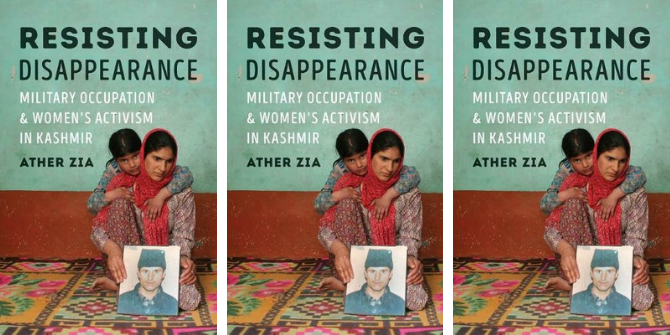Popular Culture in Asia consists of studies of film, music, television, anime, architecture, and computer-mediated communication in China, Japan, South Korea, Taiwan, the Philippines, Malaysia, and Singapore. It aims to provide perspectives on relationships between Asian popular culture and a number of major socio-political issues and movements, including war responsibility, democratization, globalization, urbanization, modernization, and gender reconstruction. The articles included in this volume adeptly chart the ways in which popular culture can be simultaneously progressive and conservative, writes Ulises Moreno-Tabarez.
 Popular Culture in Asia. Lorna Fitzsimmons and John A. Lent (eds). Palgrave Macmillan. May 2013.
Popular Culture in Asia. Lorna Fitzsimmons and John A. Lent (eds). Palgrave Macmillan. May 2013.
Lorna Fitzsimmons and John A. Lent’s edited volume takes a look at major socio-political issues and movements in Asia through the lens of popular culture. The aim of this book is to document the rapid changes reflected in and informed by popular culture in Asia, or more specifically, China, Japan, South Korea, Taiwan, the Philippines, Malaysia, and Singapore. It contributes to three particular strands of popular culture research as suggested by the book’s title: memory studies, urban studies, and celebrity and fan culture. The articles address various issues including globalization, urbanization, modernization, and re-conceptualizations of gender, and contributions are concerned with the socio-political and in some cases economic functions of popular culture, and take on an interdisciplinary approach to highlight the diverse roles popular culture plays in re-constructing Asia in different imaginaries. The various methodologies employed are ethnographic, comparative, textual, and historical. The overarching point the book seems to make is that ‘Asia’ consists of real and constructed popular imaginaries that are always-already contested and fraught with socio-political consequences.
Organized into three parts each consisting of three chapters, Part I is concerned with memory, broadly conceived, and primarily consists of studies of films that attempt to ascertain the deeply contested nature of memories, or representations thereof, within Twentieth Century conflicts. Part II deals with the city or urban spaces, specifically displays of architecture as signs of regional, national, and international competition, as well as the formation and merging of their dynamic identities. Part III concerns the growth of celebrity culture in Asia in the later part of the twentieth century. The articles that Fitzsimmons and Lent chose to include in this volume adeptly chart the ways in which popular culture can be simultaneously progressive and conservative. They highlight the links between popular culture and ‘nationalism, Western social forces and cultural forms, regionalism, political change, modernity, traditionalism, and gender identity’ (p. 3). Amongst the most thought-provoking contributions from each section are those by Sueyoung Park-Primiano, Ian Morley, and Shzr Ee Tan.
Park-Primiano examines collective memory and its contested nature in public and political spheres through contemporary South Korean cinema. Specifically, she looks at two political satires that confront the ways in which the collective memory of Park Chung Hee, the army general who ruled South Korea for 18 years (1961-1979), is contested. The commercial films Park-Primiano examines, The President’s Barber (2004) and The President’s Last Bang (2005), were produced during South Korea’s period of liberal democratic governance, or Roh Moo Hyun’s term (2003-2008). The article is insightful when it comes to highlighting political nuances in the film industry and how these translate onto larger South Korean culture, politics, and society. Although one wonders why the author employs unexplained ‘Western’ points of reference or comparison, such as Forrest Gump or Hugh Heffner’s Playboy Mansion. Park-Primiano’s strength is her concluding argument that if nothing else the films evince progress in the struggle against censorship in South Korea.

Morley’s article discusses architecture in major Asian cities post-1980s. The key point Morley makes is that the visual definition of the city is ‘crucial to the promotion of modernity and Asia’s place in global society’ (p.92). Though there are many facets of urban life that have been altered in the past three decades in Asian nations, Morley focuses on skyscrapers because of their dramatic increase in the region since the 1990s. He claims that their value is highly symbolic in terms of nations asserting or advertising their economic prowess. When thinking about Asian cities, he argues, one must note that in many Asian nations, ‘the primary urban unit is not the big city but is still the rural-based village’ (p.94). This is a point that seems to be quite crucial for any urbanist working in Asia primarily because contemporary scholarship privileges urban spaces without seriously considering the historical dialectical relationship between the urban and the rural. In terms of scholarship, Morley notes that whereas once urban growth was seen as a negative process, the tide has changed because it is now tied to economic expansion and modernity. Such urban sprawl has had many negative effects, which include great disparity in wealth (as evinced in gated housing in China) and the loss of local and national heritage in architectural styles. These critical observations are important though one wishes Morley would be more critical of ‘modernity’ as a construct and not imply it is inherently a Western-based iteration of progress.
Tan uses Fay Wong’s song entitled “Fragile Woman” to examine the intersections between the consumption of ‘musical gay icons’ and the production of ‘identity’ and ‘modernity’. Wong is a Chinese-Hong Kong singer who is considered a ‘musical gay icon’ for ‘Chinese gay communities’, particularly Chinese gay communities in Hong Kong, Taiwan, and Singapore. The article’s main strength is that it pays attention to an under-represented group in transnational queer studies. It raises complex and important questions about the consumption and commodification of queer cultural products that are not ‘Western’ oriented. Tan employs an ethnographic methodology to gauge the different interpretations and significance ascribed to Wong’s song. Tan’s main thesis is that the contested notions of modernity in relation to gay icons are ‘realms for the imagining, subversion, performance, and mobilization of multiple and strategic identities’ (p. 186). It is unclear how many gay men she interviewed for her study, or what about them—aside from their reported sexual identity—makes them part of a community. This is important because Tan reports that some of her respondents feel a sense of communion in their interpretation of ‘Fragile Woman’. However, such generalizations seem to stem from her respondents’ own assumptions. In one instance, Tan cites a respondent feeling like gay men ‘love divas’ because they ‘“dare to do the things we want to but can’t”’ (my emphasis, p. 191). Such a claim is used as a springboard for sweeping generalizations in variant gay and queer communities within the spaces she examines. The lack of clear methodological processes in her study calls into question some of her findings. However, Tan’s article is praise-worthy in terms of generating important questions about understudied and under-represented groups in Asia.
In conclusion, Popular Culture in Asia does a good job in providing overviews of popular culture’s role in East and South-East Asia’s cultural political economy. Perhaps the most important contribution to Asia-related studies is that important critiques are being waged through popular culture thus dismissing the notion that popular culture succumbs to the power of transnational capital. Human geographers and urban studies scholars might benefit most from the three articles in the ‘cities’ section.
—————————————
Ulises Moreno-Tabarez is a recipient of the LSE PhD Scholarship (2012-2015). He holds a B.A. and M.A. degree in Communication Studies with emphasis on performance, rhetoric, and social change from California State University, Los Angeles (CSULA). His previous research focused on issues of representation of migratory bodies/texts in the Mexico/US borderlands. Shifting geographies, his current research project looks at the role of official holidays on mobilities in Beijing, China. His doctoral project seeks to produce interactional and collaborative “mappings” of the ways in which cityscapes expand and contract as a consequence of state-sanctioned temporalities. Read more reviews by Ulises.








1 Comments